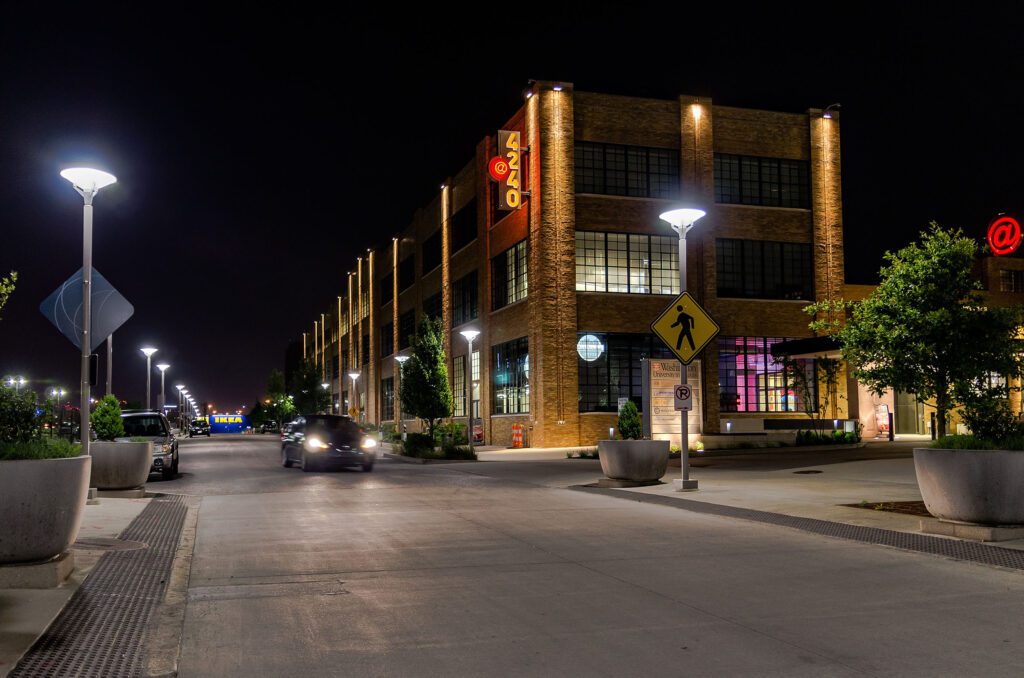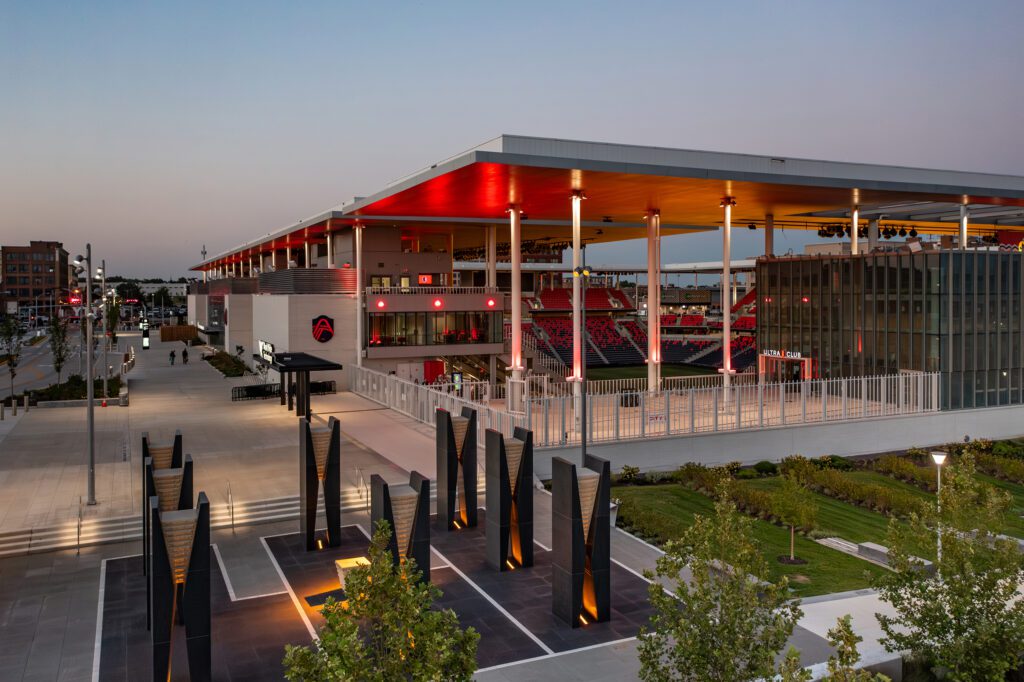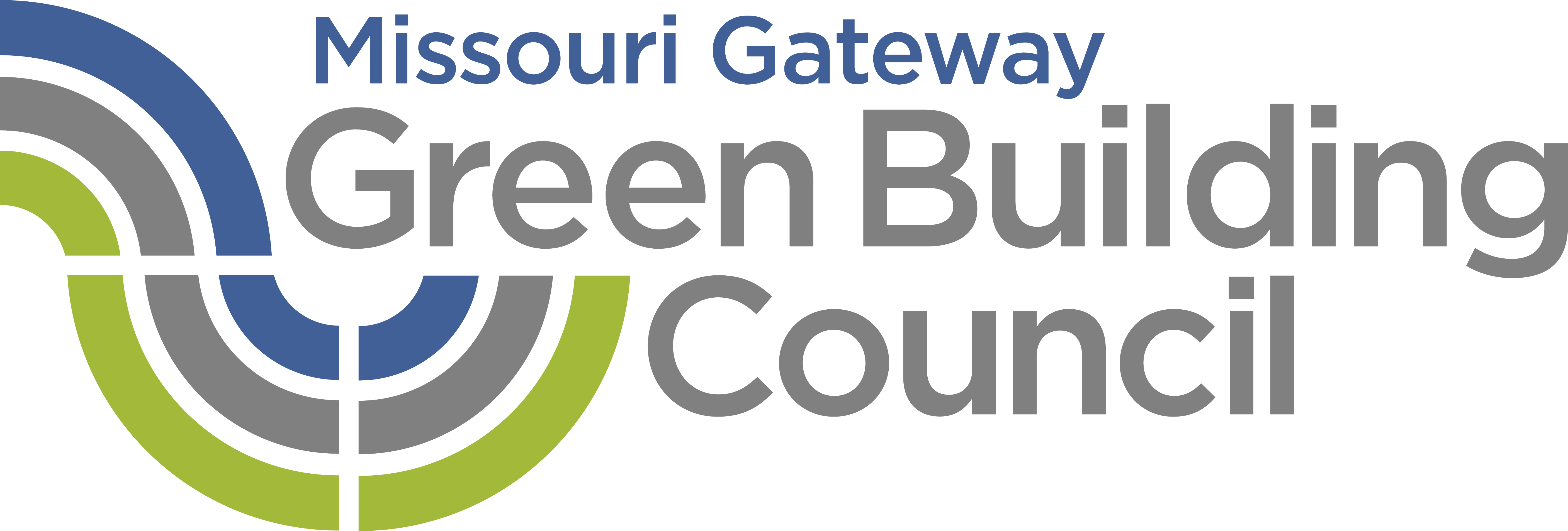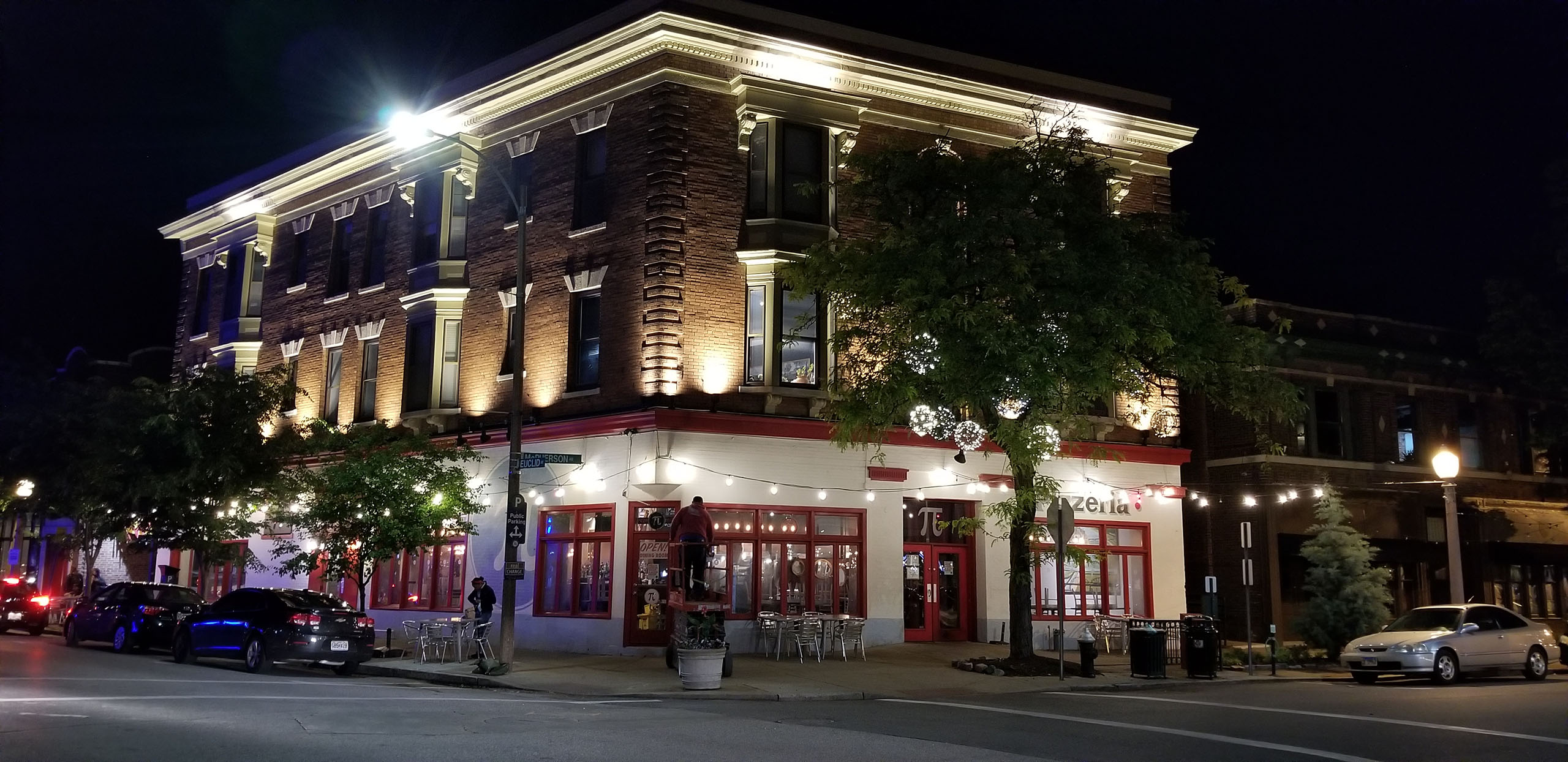By Lisa Reed, Principal, Reed Burkett Lighting Design & 2021-2023 Engagement & Outreach Committee Chair for Missouri Gateway Green Building Council
February, a month dedicated to celebrating the achievement of African Americans, can challenge us to see the world through different lenses. As a Lighting Designer, I observe the world through a ‘lighting lens,’ always aware of how light shapes experiences and interactions. This month, as we celebrate Black History Month, I find myself merging my lighting-focused perspective with an equity lens and focusing that lens on our city: St. Louis.
Lighting, often unnoticed, shapes our experience of the city after dusk. It affects not just how we see our environment but also how we feel within it. Over the coming weeks, I invite you to join me in a thought-provoking exploration of lighting equity in St. Louis, courtesy of the Missouri Gateway Green Building Council. Our February 13 Evening Program, in partnership with the National Society of Black Engineers – Gateway Chapter, will focus on lighting equity in the exterior built environment, while our February 23 Lunch Break will look at lighting equity inside buildings.
What is Lighting Equity?
Lighting equity or light justice is an idea born out of the Environmental Justice movement. The Environmental Protection Agency (EPA) defines environmental justice as “the fair treatment and meaningful involvement of all people regardless of race, color, national origin, or income, with respect to the development, implementation, and enforcement of environmental laws, regulations, and policies. This goal will be achieved when everyone enjoys:
-
- The same degree of protection from environmental and health hazards, and
- Equal access to the decision-making process to have a healthy environment in which to live, learn, and work.”
Can lighting be an environmental or health hazard? Does quality light contribute to a healthy environment? Think about the lighting where you work. Do you have comfortable, glare-free light with good color rendering? Do you have access to daylight and views? Poor lighting can cause headaches, reduced productivity, and increased absenteeism in the workplace.
In an outdoor nighttime environment, light establishes our sense of place and impacts our sense of security. What’s more, lighting impacts the health of people, plants, and pollinators. Appropriate darkness at night and while sleeping can support a healthy circadian rhythm.

The Cortex District boasts its own set of standard streetlight luminaires, including decorative pedestrian poles (pictured) and European-styled catenary fixtures. Building facades are typically illuminated from the top down to minimize skyglow.
What is Quality Light? (Hint: More is Not Necessarily Better)
When we look around at different neighborhoods across St. Louis through a lighting lens, it is hard not to notice drastic differences between neighborhoods. Unfortunately, keeping in mind the historical context of redlining in St. Louis, quality lighting approaches are often an indicator of which neighborhoods have the resources to implement them. Perhaps counterintuitively, it is common for more stable neighborhoods to have lower general light levels while areas with high crime rates tend to be flooded with bright, white light. In 2014, in New York City, the police department launched a lighting initiative known as “Omnipresence.” This tactic involved shining massive generator-powered floodlights at housing projects all night long. The light shone into people’s rooms and the buzz from the generators droned throughout the night, making sleep difficult. It’s hard to imagine a worse quality of outdoor nighttime lighting. Light has the ability to characterize a space, and overly bright light puts residents on notice that they are under surveillance.
Consider, as you traverse our city – what do you consider to be a comfortable or desirable quality of light? In residential neighborhoods where quality lighting strategies have been implemented, you will often find fairly dark streets punctuated with warm glowing streetlights and further enhanced by residential landscape lighting, porch lights, and the soft, warm glow from the homes’ interiors. This light is inviting and interesting, consisting of layers of light, including indirect lighting or some delightful sparkle, with the most powerful light sources fully shielded from direct view.
Besides what we know about darkness being important for human health, new studies are emerging which indicate that darkness may actually reduce certain types of crime. In the UK, municipalities are experimenting with Part-Night Lighting (PNL), where streetlights are dimmed or extinguished after midnight to save energy and reduce carbon emissions. Surprisingly, thefts on the streets using PNL have decreased, not increased. The reasons for this are not entirely clear, but it could be that well-illuminated streets enable would-be-criminals to see better (and to act without the use of flashlights or other “telltale” signals which might arouse suspicion.)
Current Initiatives and Future Plans: Spotlight on Experts
So, what is being done to create lighting equity in St. Louis? Historically, in the City, each alderperson has been responsible for earmarking funds for the streetlights in their ward. That’s why you might see old high-pressure sodium (HPS) lighting technology on one street and updated LED luminaires on the next. However, I’m pleased to report that this is not currently a ward-by-ward decision. ARPA Funding has been secured and efforts are underway to upgrade and update the street lighting across the entire city. This is an encouraging step led by Betherny Williams, director of the St. Louis City Streets Department. Director Williams also has the foresight to encourage neighborhoods and the Streets Department to earmark funds for maintenance and consider life cycle costs.
When it comes to neighborhoods, there is no “one size fits all” lighting solution. It is important for communities to be engaged and empowered in the decision-making process regarding any improvements, including lighting. Education and access to resources are key for giving individuals and neighborhoods the autonomy to make lighting choices that serve the needs of the community. In October, the North Newstead Association (NNA), a community nonprofit serving north St. Louis, held its Crime Prevention Summit, with the theme, Safety and Our Surroundings. This educational summit was focused on the built environment and the impact of infrastructure on safety. During the Summit, NNA provided access to resources for improving neighborhood safety, and this included lighting. When I recently spoke to Constance Siu, Executive Director of NNA, on the challenges of waiting for streetlights to be repaired or replaced, I asked, “Can everyone just turn on their porch lights?” She explained that many of the St. Louis neighborhoods where NNA works have high vacancy rates. If only one house on a block is occupied, supplemental residential porch lighting is ineffective for lighting that entire street and creating a sense of safety. Singular urban conditions like this that stem from North St. Louis’s history of redlining and disinvestment present further challenges to communities and residents in terms of implementing lighting that helps ensure a sense of safety and comfort.

The Pillars of the Valley installation along the Brickline Greenway and near the new CITYPARK Stadium, honors the 20,000 predominantly Black residents who were displaced from the once thriving Mill Creek Valley neighborhood when its homes, businesses, schools, and churches were razed in 1959 in the name of urban renewal.
Lighting the Way Forward
As we reflect on the role of lighting in our urban landscape, it’s clear that lighting is more than just an infrastructural necessity – it can also be an indicator of social justice and community well-being. From understanding the historical context of lighting in relation to redlining, to recognizing the profound impact of lighting on health and safety, we know lighting is a powerful tool in shaping the character, quality and livability of spaces in St. Louis.
The initiatives of leaders like Betherny Williams and Constance Siu, along with the ongoing efforts of the St. Louis City Streets Department and neighborhood associations, underscore a commitment to lighting equity. However, the most significant changes often stem from community involvement and advocacy. Your observations, voices, and actions are vital in ensuring that every neighborhood in St. Louis achieves light justice.
As we continue to strive for a city where every street, park, and corner is thoughtfully illuminated, consider how you can contribute to this endeavor. Look around, question, and engage. To delve deeper into the importance of planning, maintaining, and investing in equitable lighting and beneficial darkness everywhere, including historically neglected communities, visit LightJustice.org. Together, let’s light the way to a brighter, more equitable St. Louis.
Thank you to the Missouri Gateway Green Building Council (MGGBC) for creating a platform for discussing equity in the built environment and this month specifically, equity in lighting.
Thank you to the National Society of Black Engineers St. Louis Gateway Metro Professionals for partnering with MGGBC on this month’s evening program.
I hope to see you there!

